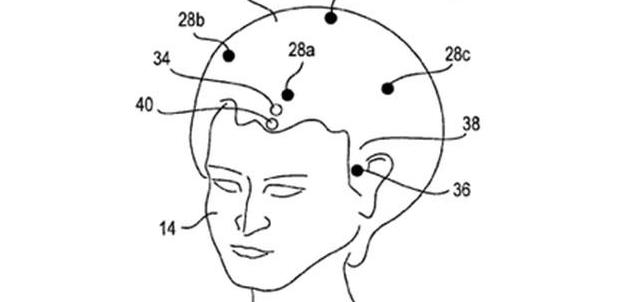Wearable tech meets UX: Why one size may not fit all
by Christine Wong — Jan 15 '14
by Christine Wong — Jan 15 '14

First there were smartphones. Now we’re starting to see smart watches. But a smart wig?
Just last month Sony filed a patent for its sensor-filled SmartWig concept, which the company says could be used for everything from health-care monitoring for elderly users to virtual reality gaming. But it does prompt a few hair-raising questions. How would it stay on your head? Could you swim in it? Would wearing a hat affect signal quality to the sensors?
Welcome to the brave new world of UX design for wearable technology.
“The challenge is to bridge the gap between aesthetics and the functional,” says Pardo Mustillo, VP of research at viiglobal Inc., a Montreal firm which aggregates data from wearable health-care devices and creates apps that analyzes it.
Samsung’s Gear watch and Nike’s Fuelband fitness tracker are bringing wearables into the consumer mainstream. Google Glass could be mass released as early as this year. Gartner expects the global market for wearable tech to hit $10 billion by 2016.
Wearable is looking like the Next Big Thing. It’s not only because all the biggest corporate players (Google, Samsung, Nike, etc.) are pursuing the sector. It’s also because consumers are demanding technology that’s more personal than ever before. A generation raised on a relentless stream of Facebook updates and Instagram selfies wants information that is essentially all about them. Wearable technology is the newest way to tell consumers a never-ending story about themselves, then share it with the rest of us for purposes of comparison and competition.
In Canada, University of Toronto professor Steve Mann has been called the “father” of the wearable computing and recently discussed how the sector is evolving in a TEDx talk, shown below.
Wearable tech has been around in various forms for decades. But it’s seen some quantum shifts lately: from active data input to passive data collection; from single to multi-purpose use; and from specific occasional use to 24/7 wear.
Jawbone’s Up wristband is a good example. It automatically monitors various data like your activity level, sleeping patterns and mood. And you can wear it all day and night, even in the shower.
“When you’re designing for these new devices you want to keep it as simple and non-invasive as possible so it becomes part of the fabric of everyday life,” says Mustillo.
The same issues surrounding big data in other tech streams are also emerging with wearable technology. One of them is how to dig through the sheer volume of wearable data to make it relevant to users.
Says Mustillo: “There’s so much junk data that to filter through that and get the gems out requires you to develop very sophisticated algorithms that are time sensitive and may not be valid next week.”
By junk data he refers to the fact that although sensors can now collect all sorts of data about us – like how many times you move, breathe or blink take in a day – it’s all rubbish unless it’s correlated and analyzed in a way wearers can use for practical purposes.
Complicating that further is the lack of consistent application programming interfaces (APIs) to integrate the various forms of data from wearables, says Mustillo. In addition, data privacy and security are concerns.
“There are also security issues if you’re going to share, retrieve and store that information. How do you get access to it? Who can you share it with?” Mustillo says.
Mustillo points out that in certain sectors like health care, wearable tech is also subject to specific regulatory laws: “In the U.S. some wearable devices have been pulled off the market because they’re doing things that require FDA approval.”
How will the new developments and challenges in wearable technology affect the skill sets demanded of UX designers?
“The design process is still the same, just using a different medium,” says Olivier Mayrand, designer and co-founder at Kiwi Wearable Technologies in Toronto. “It’s definitely something to get used to. But from the designer’s perspective they’re going to be using a lot of the same tools.”
Mustillo disagrees, a more complex UX design frontier that may, in fact, require various skills residing beyond just the UX designer.
“(That’s) what I’m seeing as you get more and more into the devices that cross boundaries of fashion and technology,” he says. “Whereas in the past you could have one designer designing an interface for a web app or a mobile app, now we need teams of people that have different levels of expertise.”
“There are the basic skill sets you need for anything, whether designing for the web or a desktop app or mobile device,” Mustillo continues. “With wearable clothes with sensors embedded in them, you start getting into industrial design and fashion.”
And you wouldn’t want an industrial designer making a wig for you or your own fashion forward buddies, would you? Unless a stylist with a head for presentable pates was also consulted, of course. Which speaks to the unique challenge UX designers have ahead of them with new wearable technologies: to weave (literally) the fashionable with the functional and make the most personal computing that’s ever existed fit comfortably like a second skin.
Christine Wong is a journalist based in Toronto who has covered a wide range of startups and technology issues. A former staff writer with ITBusiness.ca, she has also worked as a reporter for the Canadian Economic Press and in broadcast roles at SliceTV and the CBC.
Twitter LinkedIn Google+
Apr 17 '14

Apr 16 '14

Apr 15 '14

Apr 11 '14
Copyright © 2016 CommerceLab


